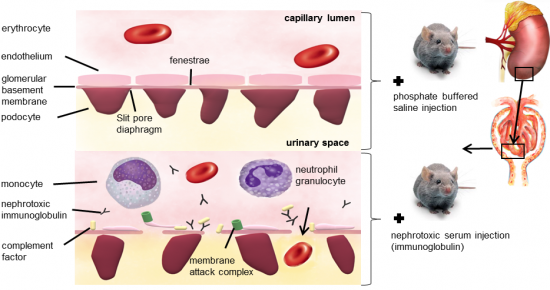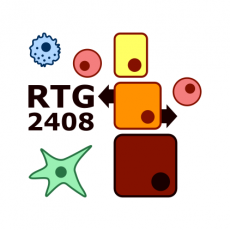Sarmad Sleiman

Sarmad Sleiman
Former MD Student
Medical Doctor Project 1
MD1: Depletion of DbpA (DNA binding protein-A) affects the inflammatory response and outcome of experimental kidney diseases
|
|
DbpA (DNA binding protein A) is a member of the human cold shock protein family. Cold shock proteins are characterized by the presence of one or more highly conserved cold shock domains, which possess nucleic acid binding properties. Thus, DbpA is a multifunctional RNA/DNA binding protein with pleiotropic functions, such as the regulation of cell proliferation, differentiation and stress responses. Evidence links a skewed cold shock protein expression pattern with inflammatory diseases and cancer. Upregulated DbpA expression has been observed in various types of cancer including hepatocellular carcinoma, gastric cancer, breast cancer, ovarian melanoma, colorectal cancer, and chronic myeloid leukemia. In healthy kidney tissue DbpA expression is found to be restricted to vascular smooth muscle cells but profoundly upregulated within the glomerular mesangial compartment in mesangioproliferative glomerularnephritis. This project aims to investigate the functional roles of DbpA in a murine model of mesangioproliferative glomerularnephritis, denoted nephrotoxic serum nephritis. Mice with genetic ablation of DbpA will be included into the study and compared to DbpA wildtype and DbpA heterozygous mice after disease induction. This will provide an insight into the disease-modulating effects of DbpA and its contribution to disease development and progression. Recent studies have shown modulating effects of DbpA concerning immune response. In order to determine immune cell infiltration, we will use flow cytometric analysis of kidney tissue. DbpA is further involved in cell-cell communication. Given its interaction with a major tight junction protein, Zonula occludens-1 (ZO-1), DbpA is denoted as ZO-1-associated nuclear acid binding protein (ZONAB) and is significantly involved in the regulation of podocyte interactions in the filtration barrier of the kidney. Malfunctioning podocyte interactions cause continuous leakage of plasma proteins (proteinuria) and is considered to be an important clinical risk factor in the progression of chronic kidney disease. Therefore we will further focus on alternations of podocyte interactions which depend on changes in the DbpA genotype and expression pattern in disease and health. The Podocyte Exact Morphology Procedure PEMP allows visualization of podocyte interactions along the filtration barrier, based on super-resolution microscopy. This method will be conducted in co-operation with the University of Greifswald. Further prospective cooperation partners are the Z-project SFB 854 for MELC analysis of DbpA and its interaction proteins and Project 9 of RTG 2408 for in vitro analysis of podocyte cell cultures. We hypothesize that DbpA is essential for the development of induced mesangioproliferative glomerular nephritis, while the expression level of DbpA influences the phenotype and the severity of the disease.
|
Photos: by UMMD, Melitta Schubert/Sarah Kossmann









